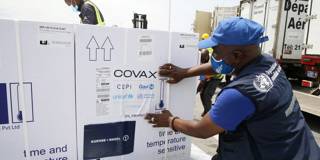Since the International Monetary Fund already has the ability to inject liquidity into the global economy through its reserve asset, special drawing rights, it is understandable that many would advocate the use of this mechanism to help struggling developing economies. But in their current form, SDR allocations leave much to be desired.
BEIJING – With the arrival of US President Joe Biden’s administration, calls for a fresh allocation of special drawing rights (SDRs), the International Monetary Fund’s reserve assets, have gained new momentum. Yet while such proposals are supposedly geared toward assisting developing countries hit hard by the COVID-19 pandemic, SDRs are allocated according to a country’s IMF quota and voting share, rather than its needs. As such, the vast majority of any new allocation would go to wealthy countries.

BEIJING – With the arrival of US President Joe Biden’s administration, calls for a fresh allocation of special drawing rights (SDRs), the International Monetary Fund’s reserve assets, have gained new momentum. Yet while such proposals are supposedly geared toward assisting developing countries hit hard by the COVID-19 pandemic, SDRs are allocated according to a country’s IMF quota and voting share, rather than its needs. As such, the vast majority of any new allocation would go to wealthy countries.